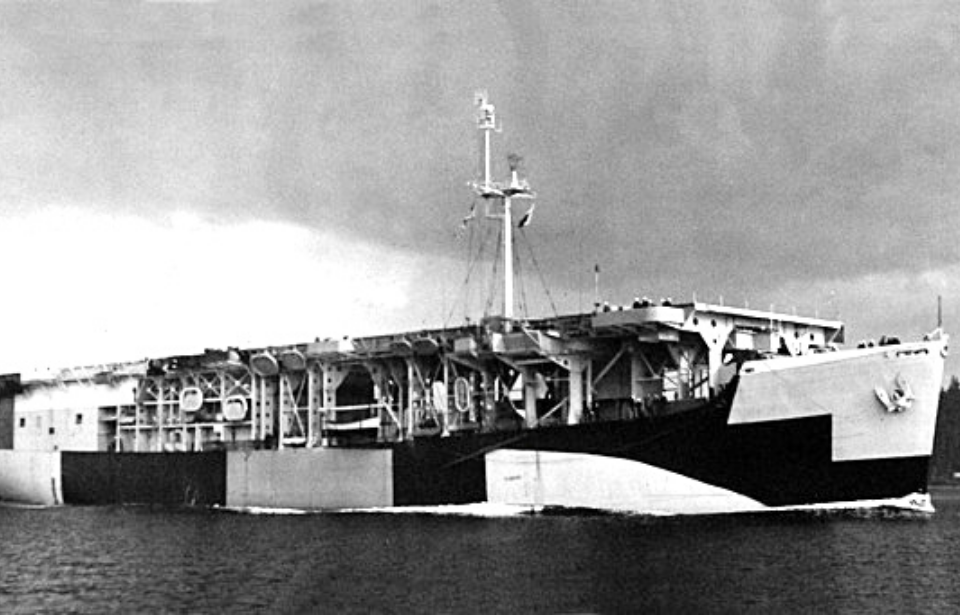Did you know the US produced 122 escort carriers during World War II? This staggering number makes it difficult to remember the achievements of one vessel over another, but the USS Long Island (CVE-1) is undoubtedly one of the most distinguished of its time.
Baby Flattops: The new kids on the block
Escort carriers, also known as “jeep carriers” or “baby flattops,” were small aircraft carriers used by the Navy, the British Royal Navy and the Imperial Japanese Navy. This new type of vessel was the result of experiments to create smaller, lightly-armored ships out of commercial cargo vessels. This made them highly efficient and low cost.
Commissioned in June 1941, the USS Long Island was the first escort carrier to join the US Navy and the lead ship in her class. She transported aircraft, aided in research into the fesability of air operations from converted cargo ships and was used to train carrier pilots.
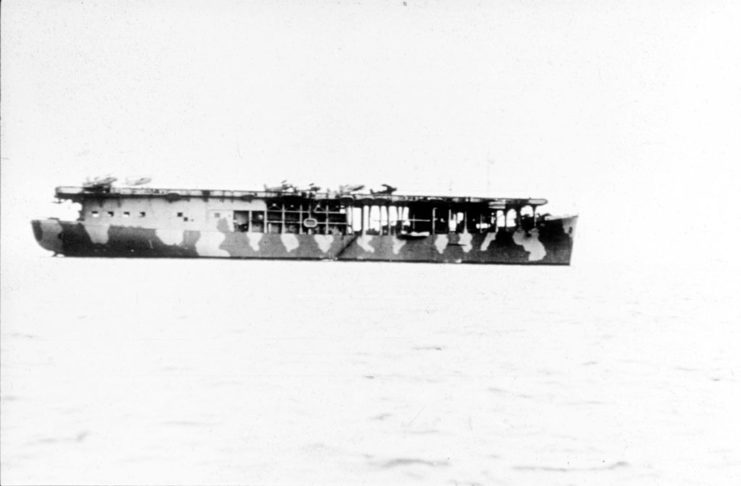
Long Island was laid down on July 7, 1939 as the C-3 cargo liner Mormacmail. Acquired by the Navy in March 1941, she was commissioned as the USS Long Island (AVG-1) under the command of Cmdr. Donald B. Duncan months before the US entered the war.
The USS Long Island enters World War II
In the months leading up to the Japanese attack on Pearl Harbor, the USS Long Island operated in Virginia and was studied to assess how effectively converted cargo ships worked as carrier vessels. Long Island‘s success during this time laid the foundation for future escort carriers that played a major part in the war effort.
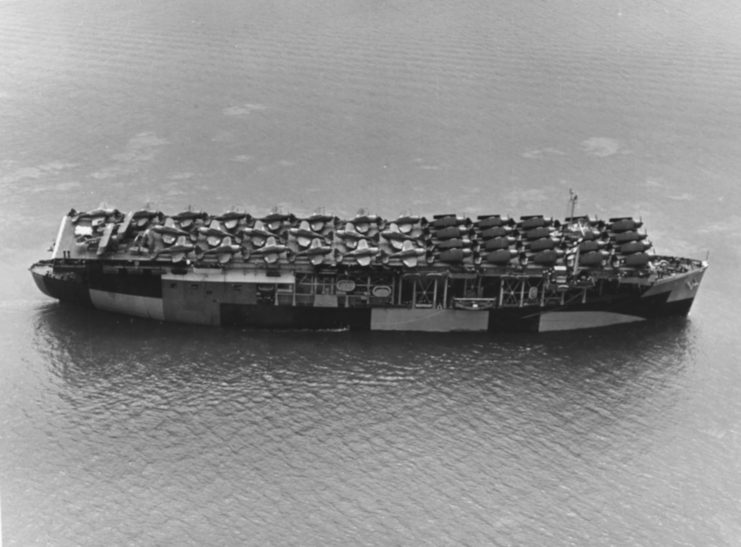
Following Pearl Harbor, Long Island traveled to San Francisco. She joined Adm. William S. Pye’s Task Force One (TF-1), which consisted of seven battleships. Long Island provided air cover and reinforced Adm. Chester Nimitz before, during and after the Battle of Midway.
The Guadalcanal Campaign
In August 1942, the USS Long Island, now reclassified ACV-1, set sail on her first international voyage, having left Task Force One that June. Settling southeast of Guadalcanal – the largest island in the Solomon Islands – she launched 19 Grumman F4F Wildcats and 12 Douglas SBD Dauntless dive bombers
Long Island‘s involvement in the Guadalcanal Campaign is considered to be her most important operation. For her service, she was awarded a battle star.
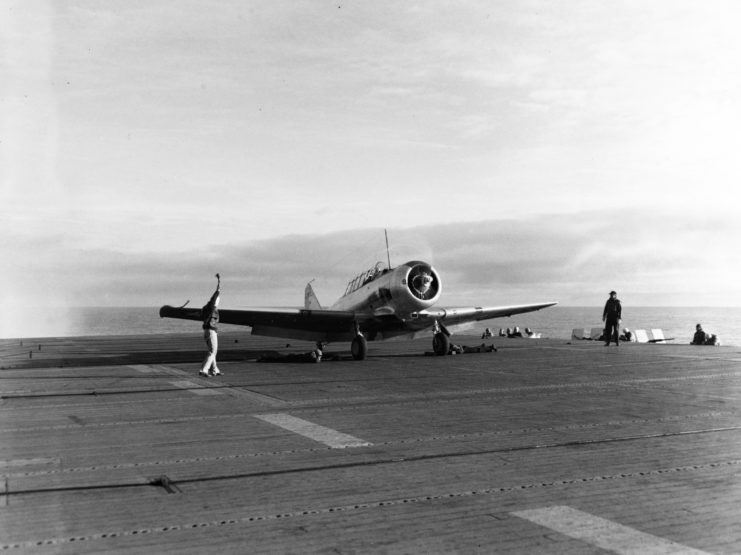
Aircraft played a major role in the Guadalcanal Campaign, codenamed Operation Watchtower. The aim was to capture and use the islands of Guadalcanal and Tulagi as bases to support the eventual capture of Japanese military bases at New Britain in Papua New Guinea. It was the first major land offensive by Allied forces against Japan.
US forces quickly overwhelmed the island. However, the Japanese attempted to retake Guadalcanal several times. After three land battles, seven naval battles and daily aerial attacks, the Battle of Guadalcanal finally led to the defeat of the Japanese. The success of the Guadalcanal Campaign allowed the US military to take hold of major strategic positions in the Pacific Theater.
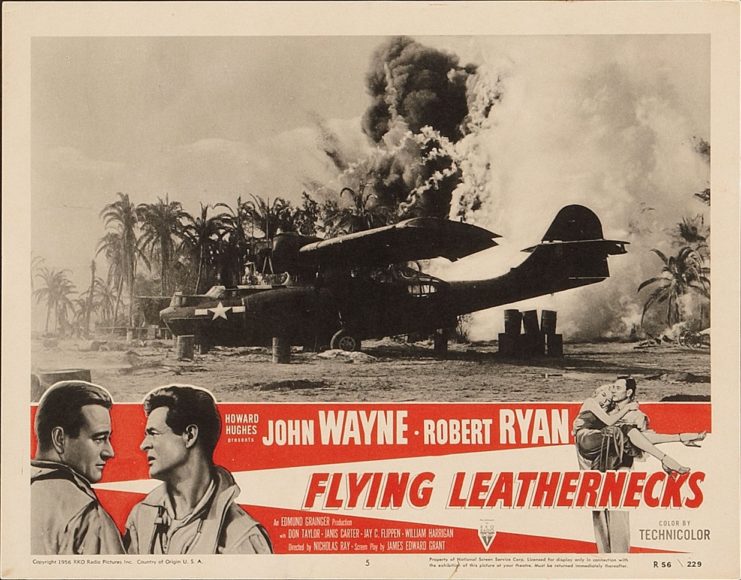
Long Island‘s role in the Gaudalcanal Campaign was celebrated in the 1951 film, Flying Leathernecks, starring John Wayne and Robert Ryan.
The USS Long Island following the war
After serving in the Pacific, the USS Long Island returned to San Diego, where she continued to train carrier pilots. Toward the end of the war and under the CVE-1 reclassification, she was used to bring aircraft and their crew from the Pacific to the west coast. Following V-J Day, Long Island‘s final days in service were spent transporting soldiers and sailors home during Operation Magic Carpet.
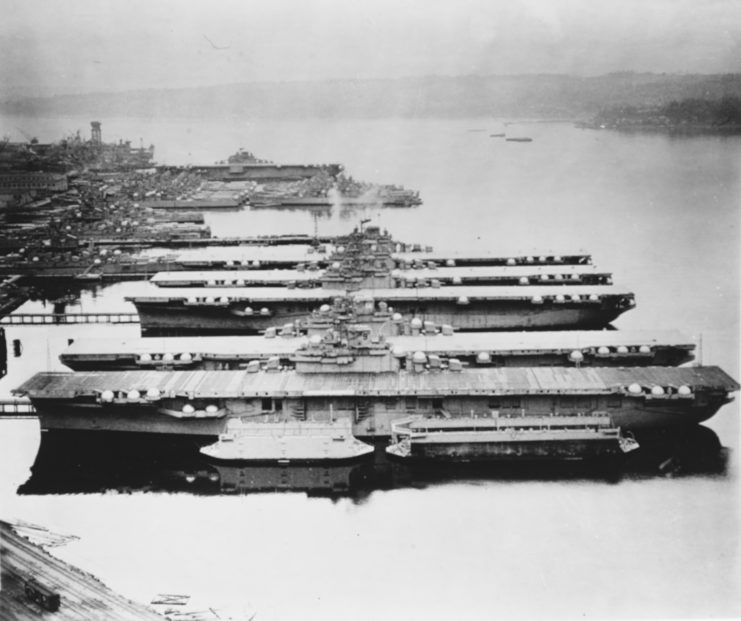
Long Island was taken to the Puget Sound Naval Shipyard and decommissioned on March 26, 1946. Despite being sold for scrap in 1947, she was acquired by the Canada-Europe Line and converted into a merchant ship under a new name: Nelly. As part of the Canada-Europe Line, she transported immigrants between Europe, Canada and Australia. In 1953, she was renamed the Seven Seas, but continued to charter immigrants from Europe to other destinations.
In 1965, a serious fire occurred onboard the Seven Seas. The following year, she was refurbished in time for her final voyage and later acquired by Rotterdam University, which converted the vessel into a hostel for students and travellers. She was finally scrapped in Belgium in 1977.
